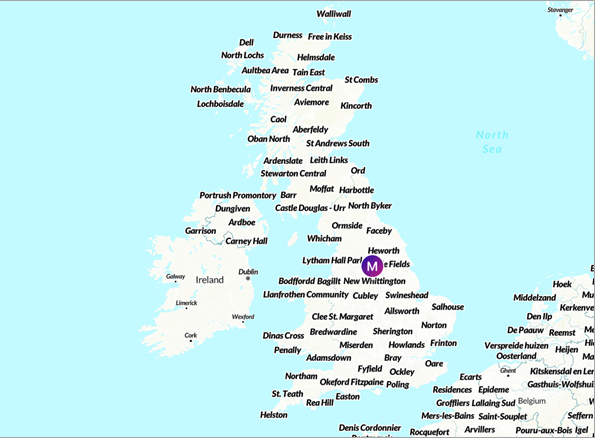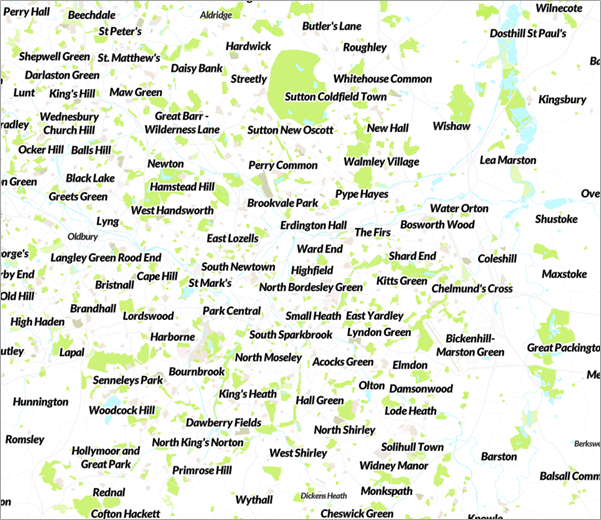Despite being founded back in 2008, NextDoor has only recently begun to penetrate the social media landscape in the UK. The app was created to connect neighbourhoods, in order for individuals who live in close proximity to share news, tips, sell items and socialise. In recent years, NextDoor’s userbase has grown to 42 million active weekly users, and the 2022 Ofcom Online Nation report identified it as being in the top ten most used social media platforms in the UK, with millions of daily users. In this blog, Senior Analyst Megan Depper takes a look at its potential in OSINT investigations.
Userbase
Perhaps uniquely for social media websites, NextDoor tends to attract users in an older age bracket. Generations which are less likely to be active on social media apps such as Instagram, TikTok or even Facebook are the most likely users of the app, and indeed data shows that the most prominent demographic using the website are 45 – 54 year olds.[1] The second and third highest age range to utilise the platform are 55 – 64 year olds and 65+ year olds.
But why is this the case? NextDoor has an intense focus on local neighbourhoods and the people residing within a close distance, and as such is more likely to appeal to homeowners, who tend to be older. Similarly, many posts relate to individuals offering local help with technical issues and general community support. As such, the app fosters a kindness-led approach to interactions. Consequently, NextDoor has been able to convince users who may not have had a large online footprint previously to join the platform. More information regarding platform demographics, identified by the work we do at NetWatch can be found here.
Functionality
At present, NextDoor’s functionality for OSINT investigations leaves something to be desired. As the website requires the confirmation of a postcode for an account to be verified, creating anonymous accounts not linked to personal data is tricky. Furthermore, a user, once confirmed via postcode, can only search posts in their immediate area making finding specific posts regarding incidents or events even trickier.
However, there is a way investigators can search for posts outside their direct area: a large map showing a plethora of localities. This map is not user friendly as large city names such as London or Manchester are not displayed; only the thousands of small locality names, as seen below.

For example, shown below is the area of Birmingham, which may seem obvious to a local familiar with the various neighbourhoods, but an investigator without local knowledge may struggle to navigate once zoomed into the area on the map. One solution would be to try to match up green spaces and bodies of water on Nextdoor’s locality map to Google Maps, and zero-in on your desired location from there.

Once investigators find their chosen neighbourhood, the difficulty is not over. If a user wants to search posts in a neighbourhood located outside their area, they will have to scroll down a timeline which is not presented in complete chronological order. If an investigator is searching for a months-old post in an active area, this will add time to their searches.
User Activity
Despite the functionality issues, NextDoor remains a very useful source of information for OSINT investigators. Users posting in their local communities can offer incredible insights – our Incident Investigations alone have benefited from the increased use of the platform, with CCTV footage of incidents being found on timelines, as well as witnesses posting regarding their experiences.
Another useful aspect of the platform is the ability for business to promote their services,[2] which can be useful in determining whether someone is able to work and what services they may be offering to their community.
Future Developments
As social media changes, more platforms are arising to fill the needs of specific demographics and problems. NextDoor seems to be the platform for local communities, and is presenting itself as somewhat of an alternative to local Facebook groups, which have previously been the go-to platform for sharing local concerns and neighbourhood updates. Privacy guarantees and the strict sign up rules have convinced a primarily older demographic to start using NextDoor, and we predict that the platform will continue to provide value to all of our intelligence products as users leave an online footprint on the site.
[1] https://www.similarweb.com/website/nextdoor.co.uk/#demographics
[2] https://blog.nextdoor.co.uk/2021/10/08/local-business-triples-customer-base-in-surrey-with-a-nextdoor-business-page/